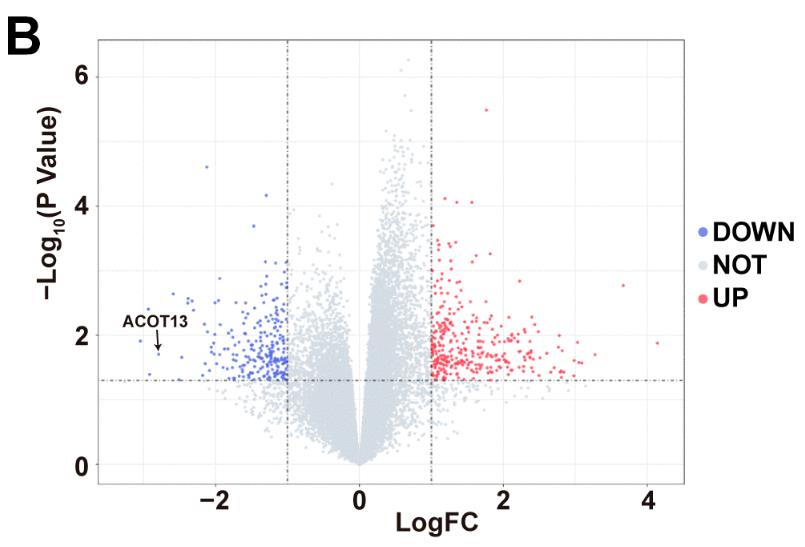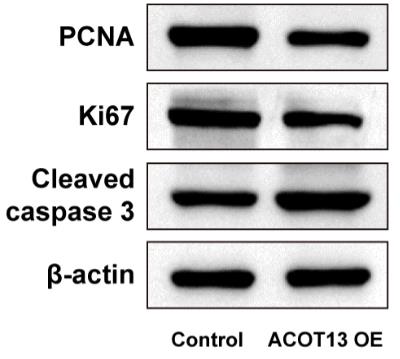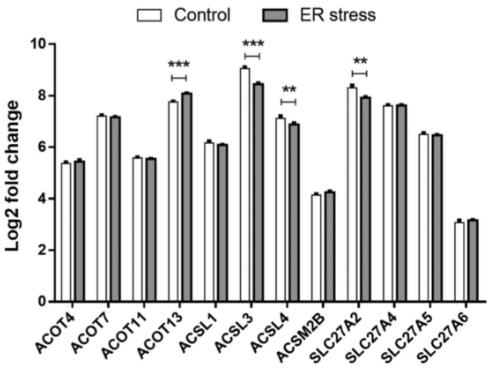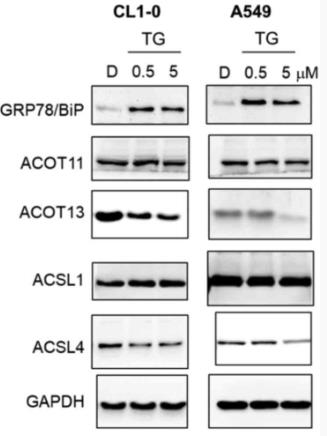Recombinant Human ACOT13 protein(Met1-Asn140), His-tagged
| Cat.No. : | ACOT13-399H |
| Product Overview : | Recombinant Human THEM2 (NP_060943.1) (Met1-Asn140) was expressed in E. coli with a polyhistidine tag at the N-terminus. |
- Specification
- Gene Information
- Related Products
- Case Study
- Application
- Download
| Species : | Human |
| Source : | E.coli |
| Tag : | His |
| Protein Length : | Met1-Asn140 |
| Form : | Lyophilized from sterile 50 mM Tris, 100 mM Arg, pH 8.0. Normally 5 % - 8 % trehalose, mannitol and 0.01% Tween80 are added as protectants before lyophilization. |
| Molecular Mass : | The recombinant human THEM2 consists of 158 amino acids and predicts a molecular mass of 17.2 KDa. It migrates as an approximately 18 KDa band in SDS-PAGE under reducing conditions. |
| Purity : | > 85 % as determined by SDS-PAGE |
| Storage : | Samples are stable for up to twelve months from date of receipt at -20°C to -80°C. Store it under sterile conditions at -20°C to -80°C. It is recommended that the protein be aliquoted for optimal storage. Avoid repeated freeze-thaw cycles. |
| Reconstitution : | It is recommended that sterile water be added to the vial to prepare a stock solution of 0.2 ug/ul. Centrifuge the vial at 4°C before opening to recover the entire contents. |
| Gene Name | ACOT13 acyl-CoA thioesterase 13 [ Homo sapiens ] |
| Official Symbol | ACOT13 |
| Synonyms | ACOT13; acyl-CoA thioesterase 13; THEM2, thioesterase superfamily member 2; acyl-coenzyme A thioesterase 13; HT012; hypothalamus protein HT012; thioesterase superfamily member 2; THEM2; PNAS-27; |
| Gene ID | 55856 |
| mRNA Refseq | NM_001160094 |
| Protein Refseq | NP_001153566 |
| UniProt ID | Q9NPJ3 |
| ◆ Recombinant Proteins | ||
| ACOT13-31444TH | Recombinant Human ACOT13, His-tagged | +Inquiry |
| ACOT13-2034HFL | Recombinant Full Length Human ACOT13 Protein, C-Flag-tagged | +Inquiry |
| ACOT13-5175Z | Recombinant Zebrafish ACOT13 | +Inquiry |
| Acot13-1499M | Recombinant Mouse Acot13 Protein, Myc/DDK-tagged | +Inquiry |
| ACOT13-5615H | Recombinant Human ACOT13 Protein, Myc/DDK-tagged, C13 and N15-labeled | +Inquiry |
| ◆ Cell & Tissue Lysates | ||
| ACOT13-9089HCL | Recombinant Human ACOT13 293 Cell Lysate | +Inquiry |
Case 1: Wang B, et al. Aging (Albany NY). 2024
Autosomal dominant polycystic kidney disease (ADPKD) often leads to end-stage kidney failure, and research shows that ACOT13 levels drop in kidney cyst tissues of ADPKD patients. However, the exact role of ACOT13 in this disease is still not fully understood. By analyzing data from the GSE7869 dataset, scientists compared ACOT13 levels in normal and cystic kidney tissues. Further studies using gene set enrichment analysis found that higher ACOT13 levels are associated with changes in key signaling pathways like PI3K-Akt, MAPK, PPAR, and fatty acid metabolism. Experiments on ADPKD cells showed that increasing ACOT13 levels can slow cell growth, interrupt the cell cycle, and cause apoptosis, which involves certain proteins and affects mitochondria, hinting that ACOT13 can induce cell death related to mitochondria.

Fig1. The volcano plot displayed DEGs between H- and L-ACOT13 groups.

Fig2. ACOT13 overexpression affected proliferation- and apoptosis-related proteins.
Case 2: Liu KT, et al. Oncol Rep. 2018
The endoplasmic reticulum (ER) plays a key role in important cell functions like lipid metabolism and protein management. When cells face stress from low oxygen or nutrients, misfolded proteins build up in the ER, leading to stress responses, often linked to cancer. However, how this ER stress affects enzymes like acyl-CoA thioesterases remains unclear. Studies show that high levels of some enzymes, such as ACOT7 and ACOT13, correlate with poor outcomes in cancer patients. Interestingly, ER stress doesn't change the expression of ACOT7, ACOT11, SLC27A4, and SLC27A5, but lowers levels of others like ACSL3 and ACSL4. This stress decreases fatty acid uptake in certain lung cancer cells but doesn't affect reactive oxygen species. Further analysis points to new targets for research in this area.

Fig1. mRNA expression. Raw mRNA expression data were obtained from the GEO database.

Fig2. Western blot analysis was used to examine the protein expression levels.
Human ACOT13 protein is pretty important in lipid metabolism because it breaks down acyl-CoAs into free fatty acids and coenzyme A. This function helps manage the levels of these molecules in cells, playing a role in gene transcription and cell signaling. You can find ACOT13 in various tissues, and it's also present at cell junctions. It's been studied as a possible indicator for patient outcomes in certain cancers like ovarian cancer. ACOT13 might also influence immune responses and the effectiveness of immunotherapies, making it an intriguing subject in medical research, especially for cancer biology and metabolic diseases. Recombinant Human ACOT13 protein, known for breaking down fatty acids via its enzymatic activity, finds multiple applications in research, industry, and production. In scientific research, it's used to study metabolic pathways and lipid metabolism, helping scientists understand how our bodies manage fats. In industrial settings, it could play a role in creating more efficient methods for biofuel production, as it helps in processing fatty acid feedstocks. Additionally, the enzyme's function in lipid breakdown might offer insights into developing treatments for metabolic disorders, making it a valuable tool in drug development and disease model studies. Overall, ACOT13 is an important resource across various fields due to its role in efficiently managing fatty acid processes.
Not For Human Consumption!
Inquiry
- Reviews
- Q&As
Ask a Question for All ACOT13 Products
Required fields are marked with *
My Review for All ACOT13 Products
Required fields are marked with *
Inquiry Basket


